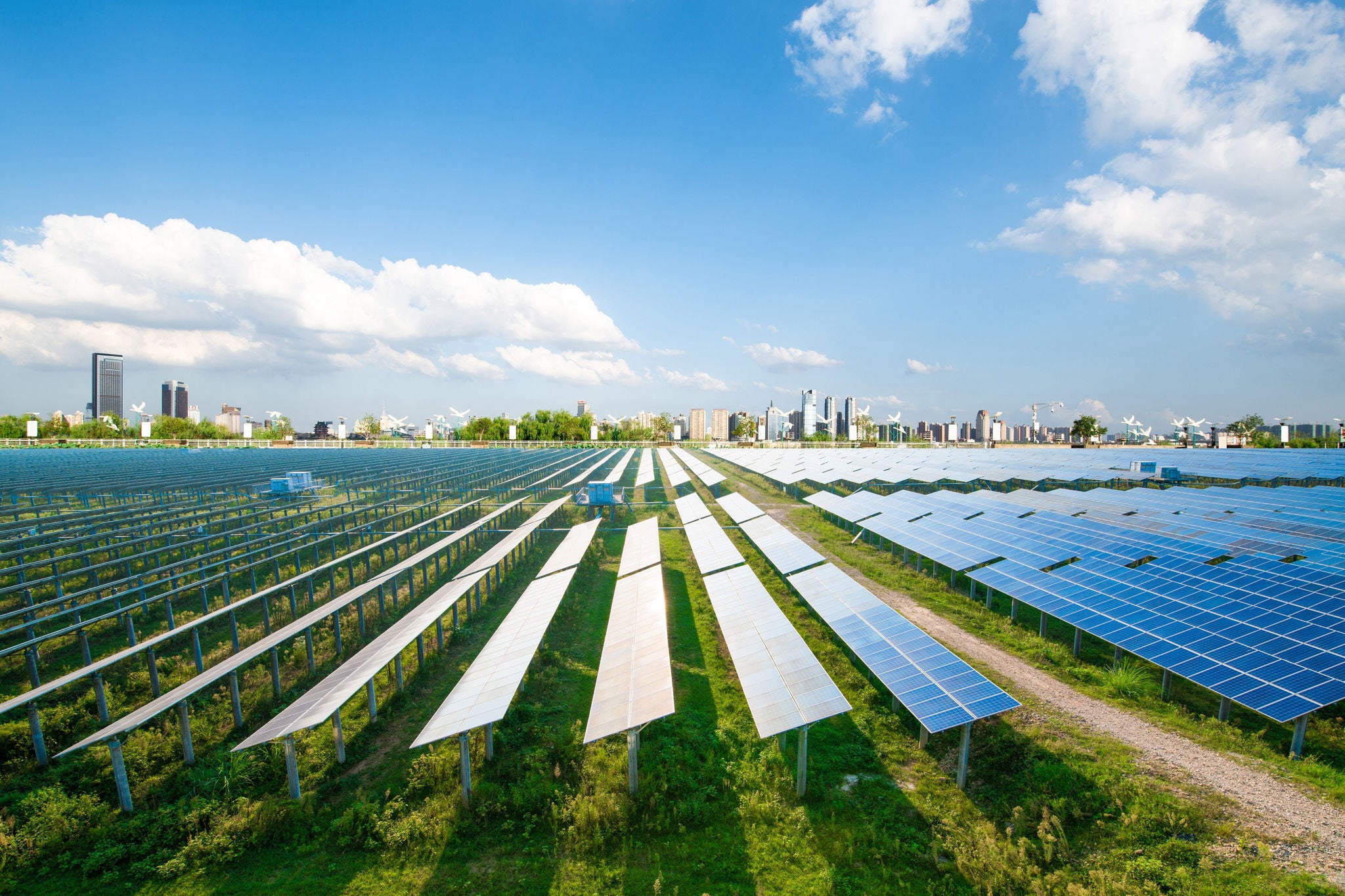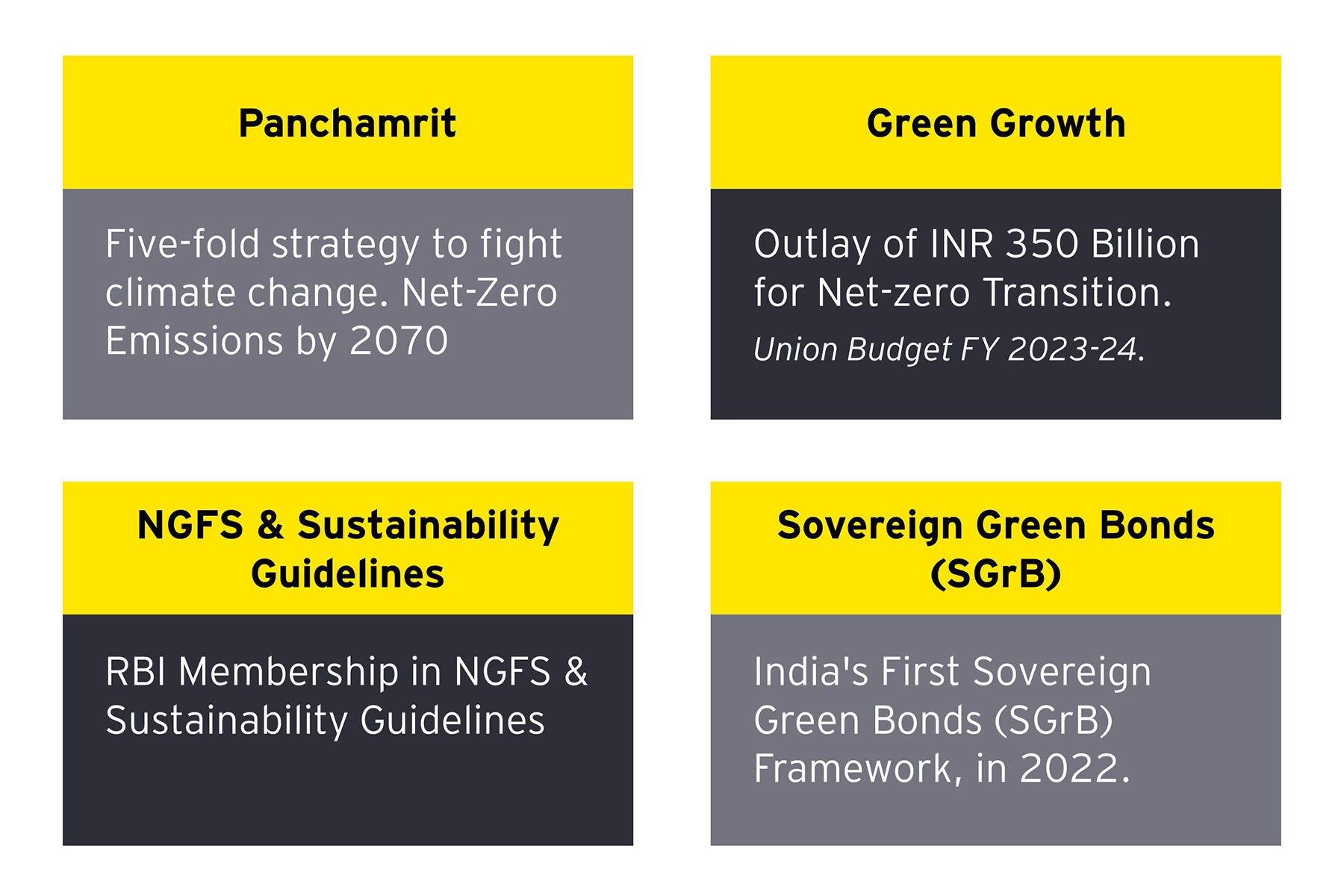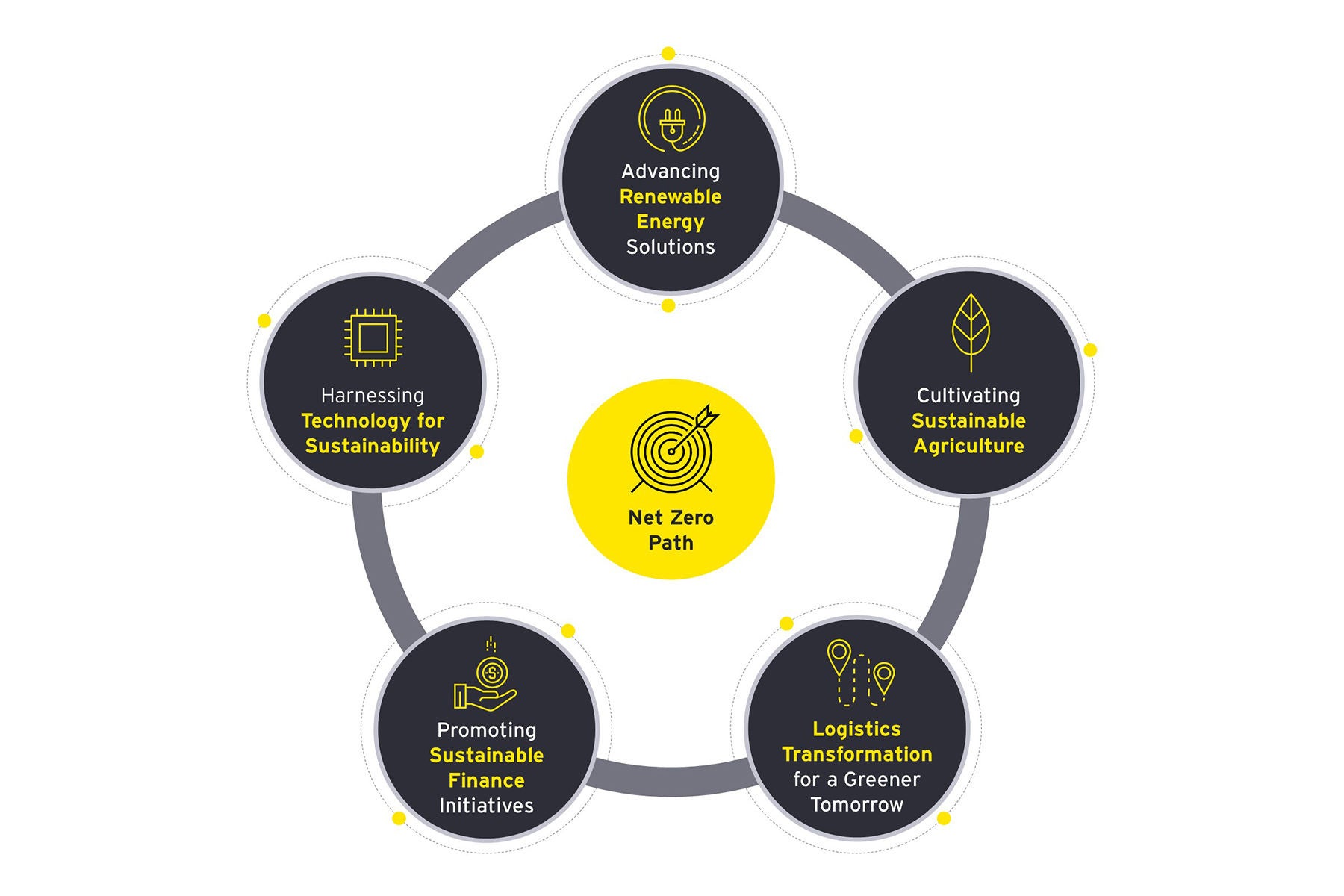EY refers to the global organization, and may refer to one or more, of the member firms of Ernst & Young Global Limited, each of which is a separate legal entity. Ernst & Young Global Limited, a UK company limited by guarantee, does not provide services to clients.

Embracing renewable energy: a cornerstone of our strategy
Embracing renewable energy resources will play a crucial part in the development of India’s sustainable strategy. With pride, we stand as the world's third-largest producer of renewable energy, with 42% of our installed capacity sourced from clean and sustainable options. The nation’s goal of producing 500 GW renewable energy capacity by 2030 will unlock 80% of power capacity additions from renewable sources. Notably, Government of India’s push for green hydrogen through the "National Green Hydrogen Policy" exemplifies the country’s determination to promote low-emission fuels. The increasing investments in renewable energy, reaching a record US$14.5 billion in FY 2021-22, also demonstrate India’s unwavering commitment to a greener energy future.
Cultivating sustainable agriculture: a pivotal role in India’s economic landscape
Sustainable agriculture practices are critical to nurture food security and ecological balance in India. Addressing challenges, such as fragmented landholdings and over-reliance on monsoons, requires adoption of climate-resilient agriculture. By promoting investments in sustainable agriculture, India can secure a nutritious diet for its burgeoning population by 2047. The influx of impact investments into the agriculture sector, approximating US$846 million, underscores the industry's willingness to integrate sustainability and climate-friendly practices into its core.
Logistics transformation: essential for a greener tomorrow
As India marches toward becoming a US$26 trillion economy by 2048, the transportation and logistics sector presents both opportunities and challenges. To combat the sector's significant contribution to CO2 emissions, the government must take decisive measures to achieve net zero targets by 2050. With freight transportation heavily reliant on fossil fuels, adopting cleaner alternatives and optimizing logistics processes is imperative. Encouragingly, sustainable transportation financing is witnessing remarkable progress through the collaborative efforts of the government, financial institutions, international partners, and the private sector.
As cities like Pune dedicate substantial budgets to support sustainable transport projects, such as Bus Rapid Transit Systems (BRTS) and green fuel initiatives, the transformational journey toward green logistics gains momentum.
Sustainable finance: a lifeboat of sustainable development
India must bolster its efforts to bridge the gap between funding and climate goals. Currently, green finance accounts for a mere quarter of India's requirements, emphasizing the urgency to mobilize approximately INR 11 lakh crores (US$170 billion) annually to fuel its climate ambitions. The Reserve Bank of India (RBI) has emerged as a sustainability champion, becoming a member of the Network for Greening the Financial System (NGFS) and issuing vital frameworks and guidelines.
However, collective action from financial institutions is indispensable to drive the change needed. Pooled investment funds, sustainability-linked bonds, and innovative green financing products promise to revolutionize the sustainable finance landscape.
Harnessing technology for sustainability: a bedrock for climate change action
In the quest to achieve net zero, digital technologies will play a pivot role in the coming future. Equipping communities and businesses with real-time data monitoring and predictive models empowers organizations to anticipate and adapt to climate change impacts. The implementation of innovative 5G technology holds the key to resource optimization and substantial reductions in carbon emissions.
Robotics emerges as a beacon of hope, offering transformative solutions to enhance efficiency, curb waste generation, and minimize environmental footprints across sectors like manufacturing, transportation, and agriculture. These technological advancements can prove to be game changers in the drive toward sustainable growth.






